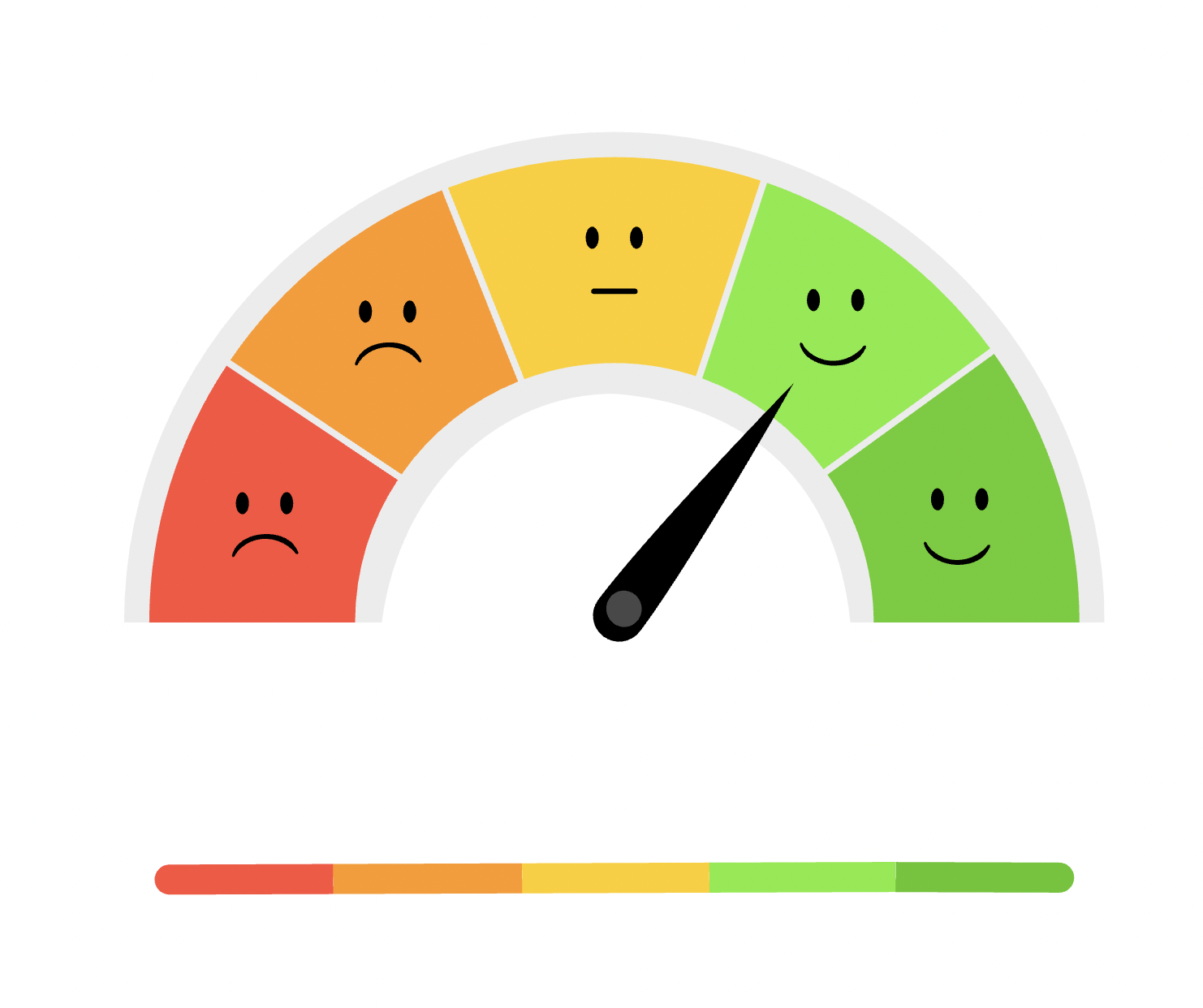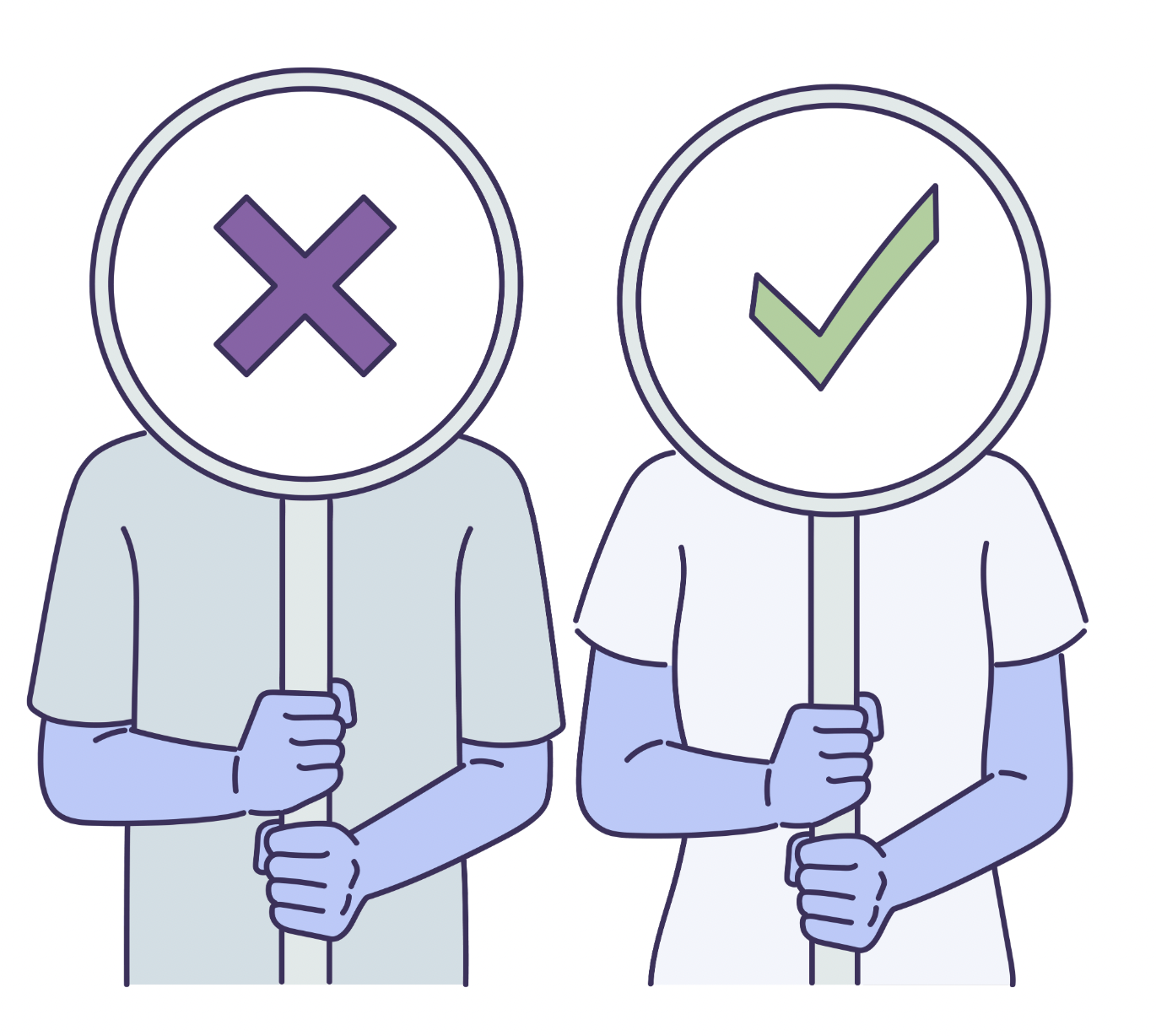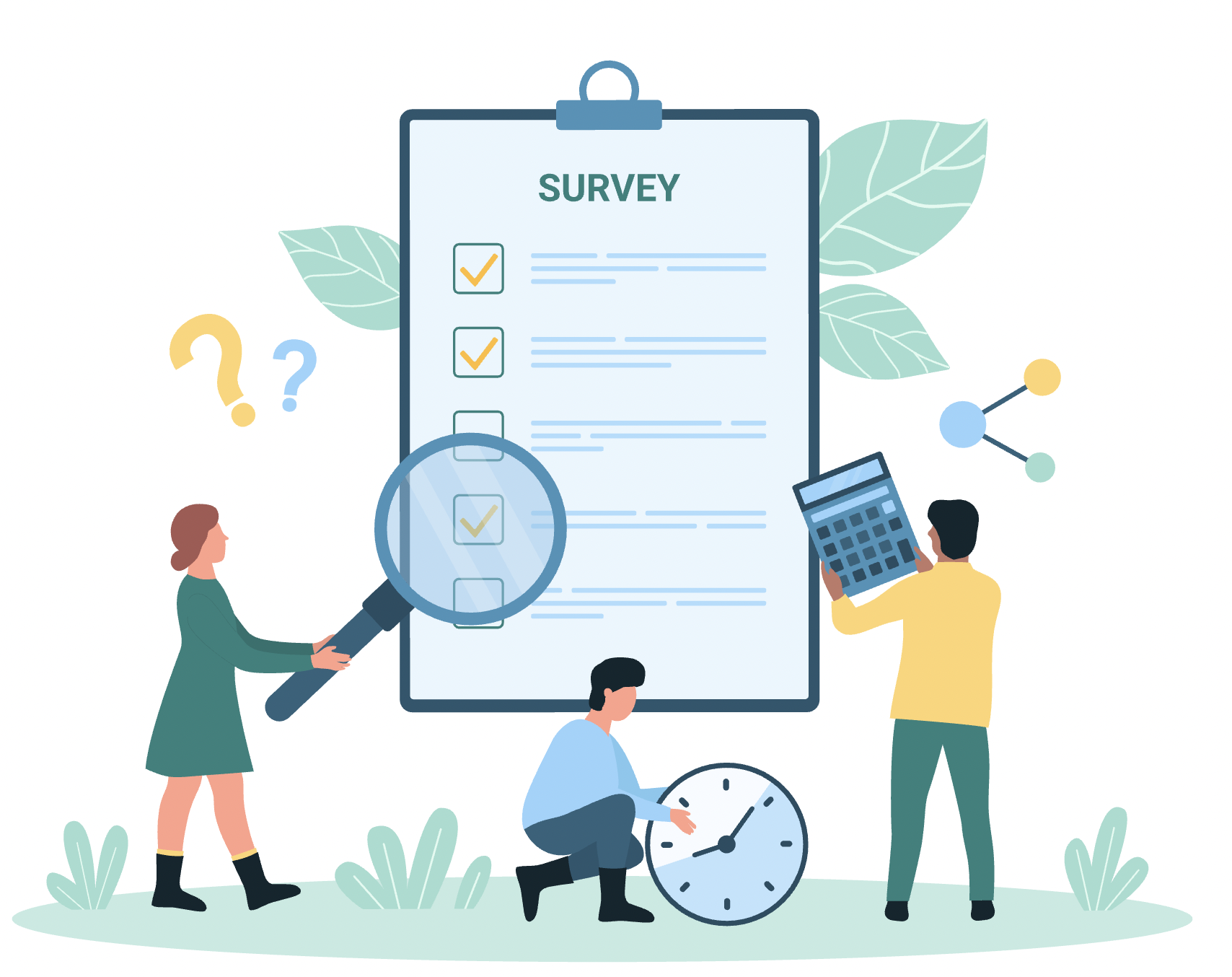12 Mar 2025
Questions to ask your users for an on-site survey
Prateek Pundir
Treasure: Unlock valuable insights with these key questions during an on-site survey to enhance your user experience, improve your website, and drive conversions. Ask the right questions to understand and serve your users better!
How well do you know the people using your website? Who are they, what's keeping them up at night, and why did they come to you looking for answers? The truth is, no one understands your users better than they do themselves, so why not just ask them what they think?
Getting feedback straight from the source by surveying visitors on your website can unlock the insights you need to improve their experience and boost your conversions. The key is figuring out how to ask the right questions at the right time so you get valuable responses without annoying anyone or wasting effort.
In this chapter, we'll walk you through the different kinds of survey questions, what you should ask, where to pop them up on your site, and how Contentsquare's Voice of the Customer tool takes the stress out of crafting questions. Trust us—it's not as tricky as it sounds!

A Guide to 6 Best Question Types for Surveys: Examples & Best Times to Use Them
Asking your users survey questions is the easiest way to figure out what's bothering them, what they need, and what drives them. The trick is knowing which questions to ask and when to ask them to get the answers that'll help you.
Let's jump into our list of survey question examples, along with a rundown of the six key types your questions will fit into:
- Open-ended
- Closed-ended
- Nominal
- Likert scale
- Rating scale
- Yes/No
Open-ended questions
Open-ended survey questions let your respondents share their thoughts freely and in detail, using their own words, rather than picking from a list of ready-made options like multiple-choice, rating scales, or simple yes/no answers.
To get responses packed with useful insights, you'll want to craft questions that are both captivating and clear, encouraging people to pour meaningful feedback into that blank text box.
Here are some examples of open-ended questions:
- What other [product/service] would you love for us to offer?
- How could we have improved your experience?
- What convinced you to go ahead with this purchase?
- What else would you like to know about on this page?
- Was there something particular that prompted you to [cancel/downgrade]?
When should you use open-ended questions?
Reach for them early on when you're just starting to gather feedback and survey your customers. If you're still piecing together the bigger picture, the responses to open-ended questions can reveal a lot about who your customers are and what they want.
They're also a great way to dig deeper after a simple yes-or-no question. Following up by asking for more details lets you tap into how your users truly feel, giving you richer insights.
Use Feedal's AI to create survey questions and analyze answers in seconds
Need help crafting the right questions for your survey? If you have a general goal in mind but aren't sure where to start, we've got you covered.
Pick from our ready-made survey templates or let our AI assistant create one for you in seconds, customized to fit your specific needs.
Once your survey is complete, our AI-powered analysis provides clear summaries, tracks user sentiment, highlights key insights, and even suggests next steps to help you make the most of your results.
Closed-ended questions
Closed-ended survey questions give people a handful of set answers to pick from, like multiple-choice options with checkboxes or rating scales. These types of questions cover things like:
- Nominal (categories with no order)
- Likert scale (think "strongly agree" to "strongly disagree")
- Rating scale (say, 1 to 5 stars)
- Yes/no (pretty straightforward)
We'll dive into each of these in more detail soon, but first, let's hang out with the big picture for a sec and check out some examples.
Using closed-ended questions makes it a breeze to crunch the numbers and make sense of the feedback when you're analyzing the results.
Here are some examples of closed-ended questions:
- What's the biggest reason you decided to [downgrade/cancel]? (Pick from options like cost, features, etc.)
- Did you find what you were looking for? (Yes or No)
- How would you score our customer support, from 0 to 10? (0 = awful, 10 = amazing)
- Would you tell a friend or coworker to check us out—how likely, on a scale? (NPS-style question)
- If we got rid of this feature, how would you feel about it? (Rate it with emojis)
When should you use closed-ended questions?
Closed-ended questions are incredibly versatile and can be used in almost any situation, but they shine in two specific cases.
First, they're perfect for kicking things off with a simple, engaging question that pulls people in. Since they're quick and easy to answer, they don't demand much effort, making them a great way to get folks comfortable responding. It's like a friendly nudge, often called the foot-in-the-door trick: once someone answers that first easy question, they're more likely to stick around and tackle a bigger, open-ended one next.
Second, they're a dream when you want to crunch numbers and spot patterns. Answers to closed-ended questions are straightforward to tally up and measure, giving you solid benchmarks to work with. Especially with rating scale questions, you can tap into how customers feel and track how things are shifting over time.
Nominal questions
A nominal question is a straightforward survey question that gives people a set of answer choices to pick from. These options are words or phrases—not numbers—and they don't overlap (unless you throw in something like "all of the above"). You can set it up so people pick just one answer or let them choose a few, depending on what you're after.
Here are some examples of nominal questions:
- What do you use our [product/service] for?
- Where did you first hear about us?
- If you couldn't use our [product/service] anymore, what would you miss most?
- What's the next feature or functionality we should work on?
- What other content would you like us to create?
When should you use nominal questions?
Nominal questions are great for market research and work well as demographic survey questions. They're ideal when you want to get a better understanding of your respondents and target audience, so you can group them into categories later on. Since nominal data is quantitative, it's simple to turn into graphs and trends, giving you a clear snapshot of the behaviors and attitudes across your various user groups.
Questions Using a Likert Scale
Likert scale questions are a popular way to gauge how strongly someone feels about a statement, usually using a 5- or 7-point rating system. These scales are called ordinal scales because the response options are arranged in a clear, specific order.
The scale is designed to be balanced: the middle number (like a 3 on a 5-point scale) represents a neutral stance, while the lowest number (always 1) reflects one extreme opinion, and the highest number (like a 7 on a 7-point scale) reflects the opposite extreme.
Using Likert scale questions is a great way to take something subjective, like how customers feel, and turn it into measurable, numerical data.
Here are some examples of Likert scale questions written in a more natural, human-friendly way:
- "How happy would you be if we added this [feature]? Rate it from 1 to 7, where 1 means 'not satisfied at all' and 7 means 'very satisfied.'"
- "Do you think our [product/service] makes [X job to be done] easier? Tell us how much you agree on a scale of 1 to 5, where 1 is 'strongly disagree' and 5 is 'strongly agree.'"
- "How would you rate the support you got from us? Pick an option from 'not helpful at all' to 'very helpful.'"
When should you use Likert scale questions?
They're really useful when you've already got a rough idea of what's on your customers' minds. For instance, if people start grumbling about a recent tweak to your ordering system through open-ended feedback, you could follow up with a Likert scale question to figure out how most users actually feel about it.
Rating scale questions
Rating scale questions let people pick a number to show how they feel about something. For instance, you might ask customers to rate your customer service from 1 to 5, or ask how likely they are to recommend your product on a scale from 0 to 10 (that's what's called a Net Promoter Score).
When you're putting one of these questions in a survey, make sure it's super clear what the numbers stand for—like, 1 could mean "awful" and 5 could mean "awesome." It's also a good idea to toss in an open-ended question afterward so they can explain why they picked that number.
Here are some examples of rating scale questions:
- "How much do you like our product lineup, on a scale from 1 to 10?"
- "How useful do you find the info on this page, from 1 to 5?"
- "How simple was it to use our service?" (Customer effort score)
When should you use rating scale questions?
Anytime you want to put a number to something in your survey or see and compare patterns, rating scale questions are your best bet. They're great for things like checking how happy customers are, figuring out how much effort they're putting in, or getting feedback on products.

Want to know what your customers really think?
Add an NPS® survey to your website using Feedal! It's easy to set up and can pop up at key moments, like after someone makes a purchase or checks out your support page.
A low score lets you know where things need a little work, while a high score shows you what's keeping your customers happy and coming back for more. Plus, with the way responses are tracked, you can look back over time to see if you're on the right track or need to step up your game.
Yes/No questions
Yes-or-no questions are as simple as they get—just a quick "yes" or "no" is all you need to answer. They might not give you a ton of wiggle room with responses, but they're perfect for getting a fast read on how people feel or whether a specific product feature is hitting the mark.
Want to spice them up a bit? Swap out the plain old yes/no with something like 👍 and 👎 or 🙂 and 🙁 to keep things fun and engaging.
Here are some examples:
- Was this article helpful? (Yes/No)
- Did you find what you needed today? (👍/👎)
- Were you worried about anything before buying [product name]? (Yes/No)
So, when should you use these?
Yes/no questions are great for sorting people into groups fast. Let's say you're trying to figure out what's holding folks back from trying your product. You could pop a survey on your pricing page asking if anything's stopping them. Then, for the ones who say "yes," follow up and ask them to spill the details.
Plus, these questions are an easy way to grab someone's attention since they take almost no effort to answer. Once they've taken that first step, they're usually more likely to keep going with more questions—or even share their contact info with you!

Where Should You Ask Your Survey Questions?
To gather meaningful feedback and actionable insights from users, it's essential to ask survey questions at the right moment and in the right place.
Consider these key questions to determine the best placement for your surveys:
- Which pages are most important to your business?
- Are there any pages that are performing exceptionally well or struggling, where additional insights could be valuable?
- At what stage in the customer journey or conversion funnel have you noticed a drop-off that needs further investigation?
Before writing a survey question, take the time to choose the right page carefully. This increases the likelihood of gathering meaningful responses rather than unhelpful answers that don't drive improvement.
Here are five key pages where survey questions can be most effective:
- Homepage
- Landing pages
- Success and post-purchase pages
- Pages with high exit or bounce rates
- Cancellation, downgrade, or churn pages

What Makes a Great Survey Question?
To get the most value from your survey, it's essential to craft questions that yield clear, actionable insights.
We've shared some of our favorite survey questions, but what exactly makes a survey question effective? The key is to design questions that provide meaningful data to guide your business decisions. Strong survey questions help you uncover crucial information, such as:
- Who your ideal customers are?
- How to price your products or services
- What obstacles prevent people from making a purchase
- Why visitors leave your website
With these insights, you can refine your website, optimize your products and landing pages, and fine-tune your messaging—enhancing the user experience and ultimately boosting conversions.
Tips for Writing the Best Survey Questions
- Put yourself in your customers' shoes—ask questions that dig into what they need, what motivates them, what frustrates them, and what's holding them back.
- Use words and phrases that feel natural to the people you're surveying.
- Keep it polite and to the point. If a question feels big or complicated, split it into smaller, bite-sized pieces to make the survey easier to tackle.
- Try starting with a quick yes/no question to get people comfortable (that's the foot-in-the-door trick!), then follow it with an open-ended one to boost responses and get richer answers.
Things to Avoid When Crafting Survey Questions
- Don't mash two ideas into one question—keep each one focused on a single topic.
- Don't jump straight to yes/no or multiple-choice questions when you're just starting out. Begin with open-ended questions to get a fresh take on what your customers think, without boxing them into your assumptions.
- Steer clear of pushy or suggestive wording that nudges people toward a specific answer. For example, swap "Is our product the best out there?" with "How do you think our product stacks up against others?"—it gives them room to share their real thoughts.